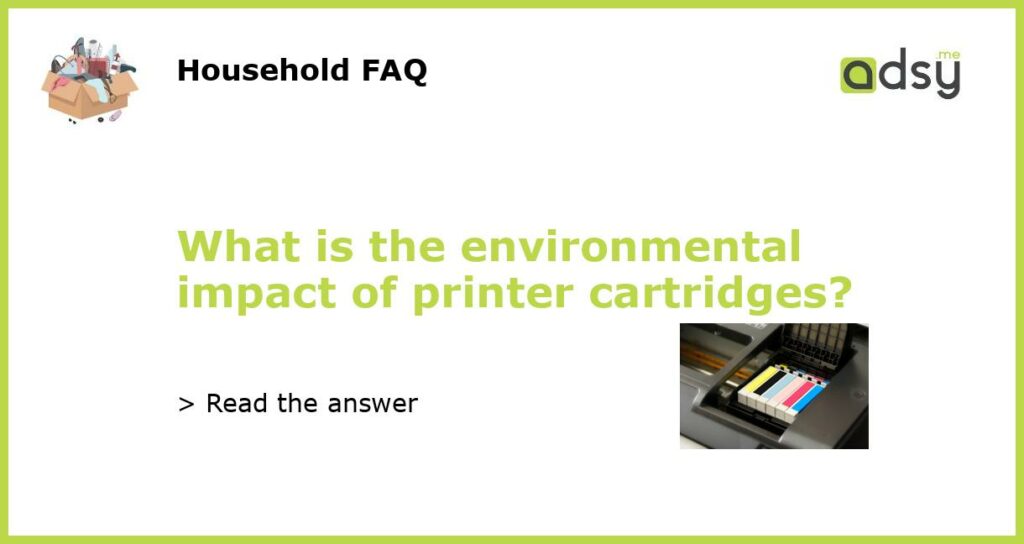The Environmental Impact of Printer Cartridges
Printer cartridges are a common item in both home and office settings, but have you ever considered the environmental impact they may have? From the materials used in their production to the energy consumed during printing, printer cartridges can have a substantial environmental impact. In this article, we will explore the various aspects of this impact and discuss potential solutions.
Materials and Manufacturing
The production of printer cartridges requires a significant amount of virgin materials, including plastic and metal. These materials are extracted from the earth through mining and refining processes, causing habitat destruction and pollution. Additionally, the manufacturing process itself consumes energy and produces greenhouse gas emissions. Once produced, cartridges are often packaged in plastic and cardboard, which further contributes to waste and pollution.
One solution to reduce the environmental impact of materials and manufacturing is to promote cartridge recycling and remanufacturing. Through recycling programs, used cartridges can be collected and disassembled. The components can then be cleaned, repaired, and refilled with ink or toner. This process not only reduces the demand for new materials but also saves energy and reduces waste.
Energy Consumption
Printing requires energy, whether it is powered from your home or office electricity grid or from a battery. This energy consumption contributes to carbon dioxide emissions and exacerbates climate change. Additionally, the production and transportation of ink and toner cartridges require energy, further increasing their overall carbon footprint.
To minimize energy consumption, one option is to use energy-efficient printers and optimize printing settings. For example, selecting “draft” or “eco-mode” can reduce the amount of ink or toner used, resulting in less frequent cartridge replacements. It is also important to consider the energy source used to power your printer. Where possible, choose renewable energy options to reduce your carbon footprint.
Waste and Pollution
Printer cartridges contribute to the growing problem of electronic waste. When cartridges are disposed of in landfill sites, the plastic and metal components can take hundreds of years to break down. In addition to their long decomposition time, these materials can release toxic chemicals and contaminants into the soil and water, posing a threat to ecosystems and human health.
One approach to tackling this issue is to encourage the proper disposal and recycling of printer cartridges. Many manufacturers and retailers offer recycling programs or take-back schemes where used cartridges can be returned for recycling. By participating in these programs, you can ensure that your cartridges are disposed of correctly and reduce waste and pollution.
Alternatives and Sustainable Printing
While printer cartridges are the standard choice for many printing needs, there are alternative options available that can have a lower environmental impact. One such option is ink tank printers, which work by storing ink in separate reservoirs that can be refilled with bottles. This eliminates the need for disposable cartridges and reduces waste.
Another alternative is using eco-friendly inks and toners that are made from sustainable and renewable materials. These options often have lower carbon footprints and are less harmful to the environment when disposed of or recycled.
Conclusion
Printer cartridges have a significant environmental impact, from the materials used in their production to the energy consumed during printing and their eventual disposal. However, there are steps that can be taken to mitigate these impacts. By promoting recycling and remanufacturing, using energy-efficient printers, properly disposing of cartridges, and exploring alternative options, we can reduce the environmental footprint of printer cartridges and contribute to a more sustainable future.






